Westbound Potash
Here’s a time wasting post about a silly little diversion we do while out on roadtrips. If we’re in an area with a railway line and spot a train, well, there’s a good chance we’ll stop to photograph it. It’s what we do. This is done this mostly for ourselves, even if once in while there’s some stuff worthy of sharing. Not often, but it happens. Here’s one that kinda makes the cut, a long freight that we chased running on the Canadian Pacific Railway’s Crowsnest Line, with some “pool” power (not a CPR locomotive to be seen). Let’s take a look at this “westbound potash”.
The train originates from Saskatchewan, where potash is extensively mined and is US bound. There’s a good number of mines up north by Saskatoon-town and more east of Regina, that extract the product. A damn lot of it, by way of unit (dedicated) trains, heads to the US. Mines go deep, sometimes kilometres down, and ship the material in bulk. It’s used mostly as a fertilizer.
The track here dates from the 1890s and heads in from Southern Alberta to the Kootenays of BC, and via a connection with a US carrier, to points south. This train’s bound for glory America. The track here was part of the CPR’s Southern Mainline most of which has been abandoned. Many trains on the line head to the States regardless of what’s being carried. They’re handed off at the border to the Union Pacific and one of their locomotives can be seen on this train in the lead position.
That engine is #5545, a ubiquitous (they’re everywhere) General Electric ES44AC (in UP-speak: C45ACCTE) built in 2005. Union Pacific takes in two thirds of the US with western leanings and dates back to the 1860s. It was part of the original US Transcontinental and is one of the railways portrayed on the TV series “Hell on Wheels”.
Right behind is Burlington Northern Santa Fe General Electric ES44DC (also pretty common), #7586 from 2007. While looking the same as the lead locomotive, it differs electrically. It’s an AC vs DC thing. Both models are part of GE’s “Evolution” series and collectively are the most common locomotives on the planet. Well, minimally North America anyway. GE is mostly associated with consumer appliances in the mind of the general public and some must be surprised to hear they’re the makers of these big beasts. That Dreamliner you flew in on might also be powered by jets made by the firm. They have hands in many pies. GE makes locomotives at plants in Pennsylvania and more recently Texas.
About mid-train is the oldest locomotive seen and the only not a GE. Here it’s a General Motors SD70MAC, BNSF #9670 from the mid-1990s. The BNSF rosters a huge number of them (and the majority made in total), but time and attrition have thinned their ranks some. GM was once the dominant player in the industry but lost that position to GE in the 1980s. This locomotive was made in London Ontario, at a plant since closed. Looking a little tired it’s a little smoky when throttling up.
Bringing up the rear is a BNSF #4558, a GE C44-9W from 1999. This model preceded the Evolution Series, but in appearance looks similar. It’s also super common with most railways rostering some. GE locomotives are often looked at contemptuously by those in the train spotting fraternity, account of them them being so everyday and commonplace. Locomotives are spread out, as seen on this train, to help even out the pulling forces.
The BNSF serves the central and western US.
You’ll notice every single car in the train is pretty much the same. Potash only moves in quantity, with trains acting as rolling conveyors. Some mines will dispatch multiple trains per day many of which approach two hundred cars long. We didn’t do a count on this one, but it took forever to pass. It might have mattered to those waiting at road crossings, but to us, let it take all day and we’re fine with it.
Why CPR tracks but no CPR locomotives? You guys ask good questions. The railways will often pool locomotives (also called run through power) allowing them to roam where needed as needed on “friendly” connections. There’s a financial return when power leaves homes rails. It’s common to see pooled power on this line in particular account most trains are US bound. UP locomotives are most often seen.
The train was photographed at two locations, one using an old building for framing and some two dozen clicks west at the bridge just above scenic Lundbreck Falls at the entrance to the Pass. It took the train a full hour to travel that distance and we suspect it got sidetracked for a meet at some point between. So much for our rush to leapfrog ahead of it!
Haze is from BC and Washington State forest fires. Smoke hung thick in the air and breathing was laboured at times. The haze lasted for most of the month and blanketed much of southwestern Alberta in that time. Prevailing winds always work against the region when there’s a fire further west.
This adventures had us in the Crowsnest Pass on assignment to document some coal mine ruins. These posts have yet to be published but will be soon. Keep an eye open for them – they will be AWESOME!
Till the next adventure, we bid you adieu.
They’re saying…
”Very exciting. I have enjoyed your posts so much…” MaryJane Danyluk.
Train spotting…
A Stop or Two Along The Way – trains & wine.
The Bawlf Incident – oopsie!
The Trains Here, Do They Fly – fast & furious!
If you wish more information on what you’ve seen here, by all means contact us!
Date of Adventure: June, 2019.
Location: Southern Alberta.
Article references and thanks: Canadian Trackside Guides.
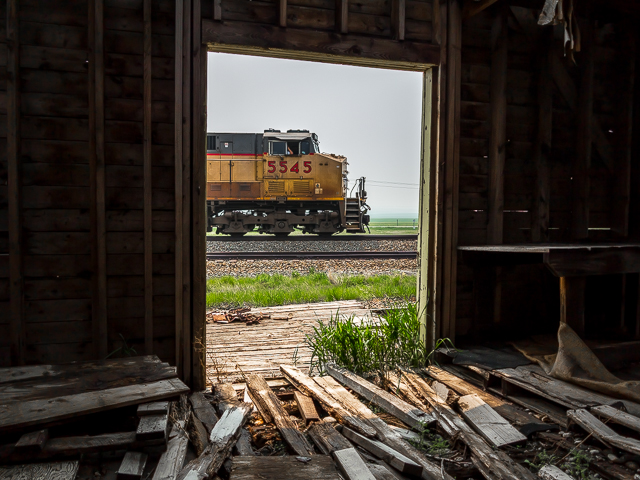
A westbound potash train, Southern Alberta.
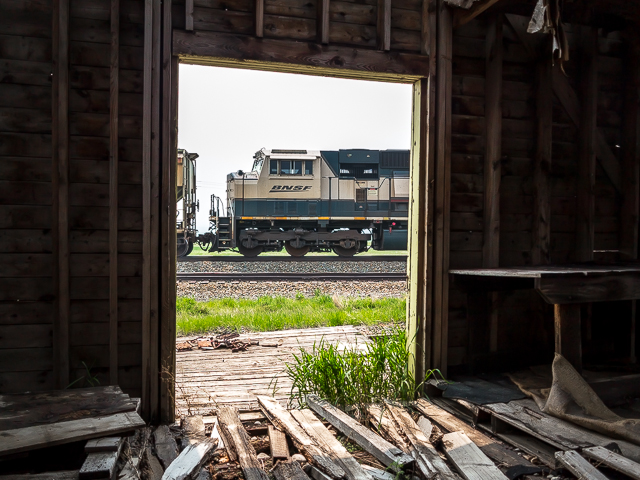
Mid point…
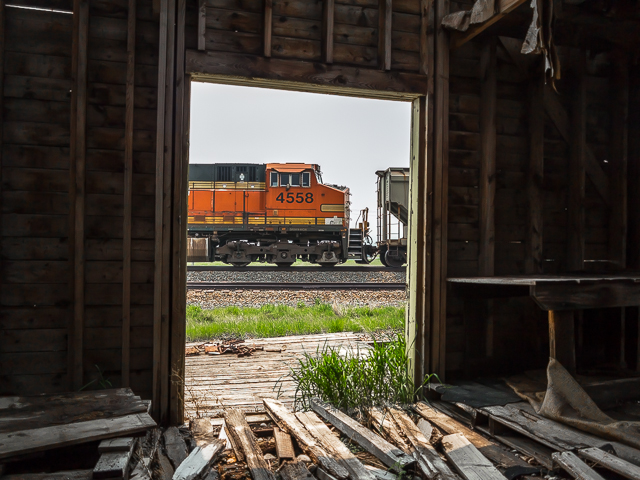
And bringing up the rear.
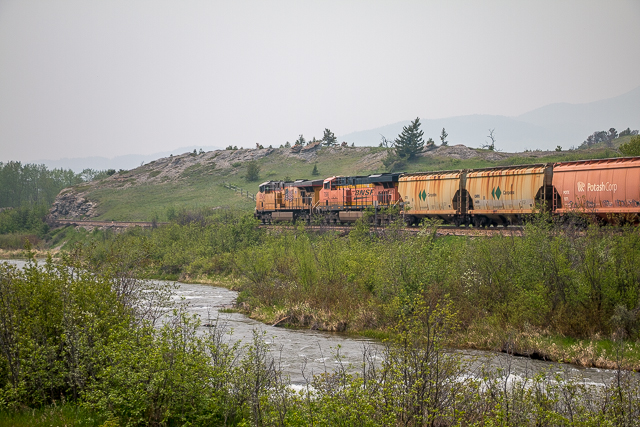
An hour later and two dozen clicks west.
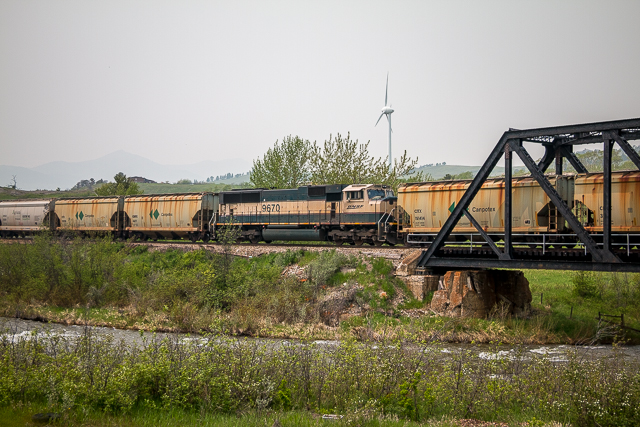
Train is US bound.
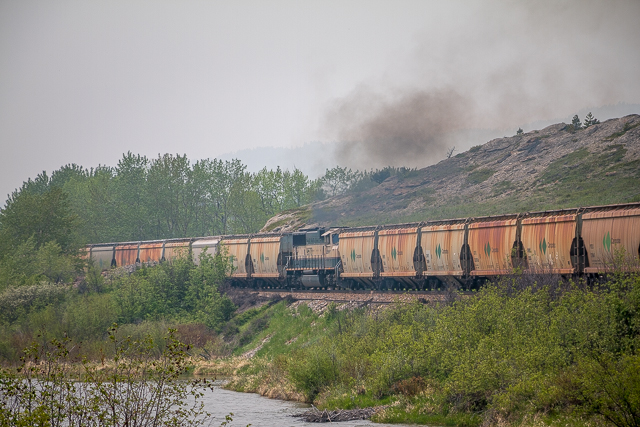
The locomotive contributes to the haze.
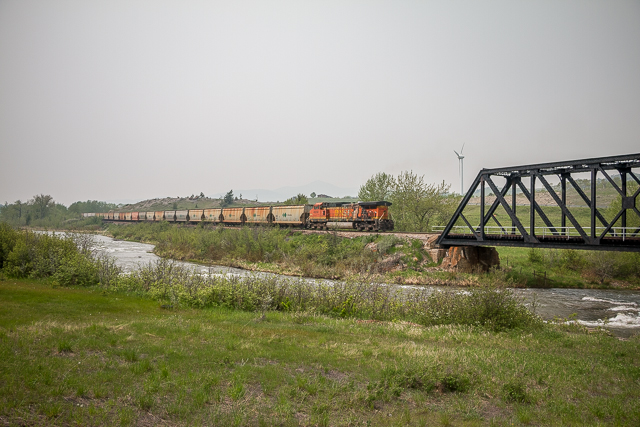
And now it’s on to tour some coal mine ruins.

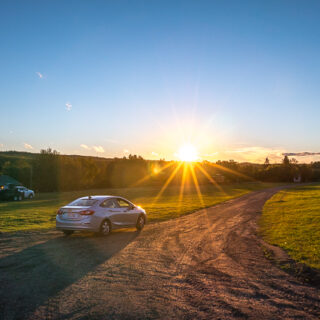
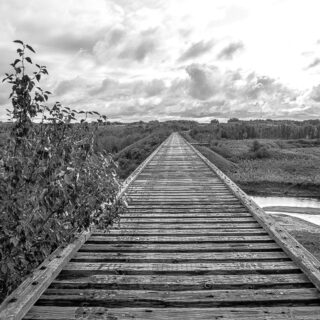
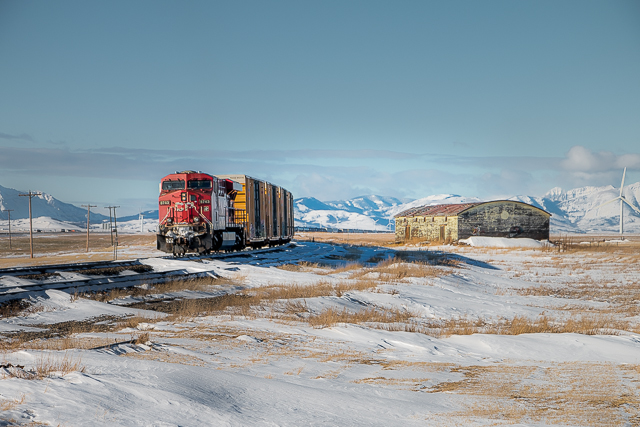
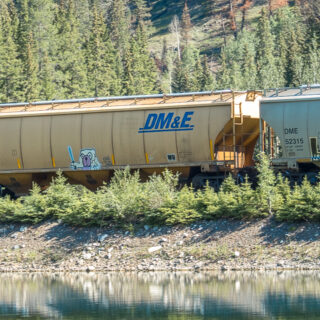
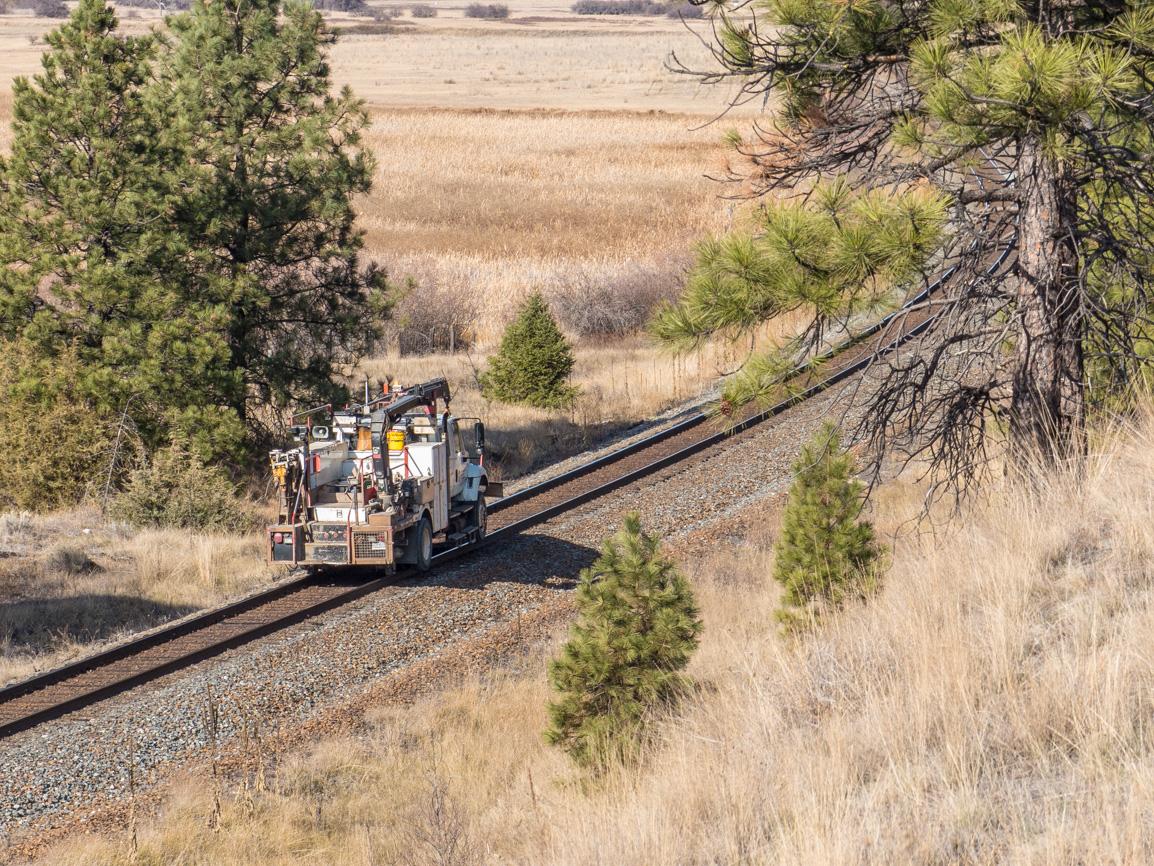
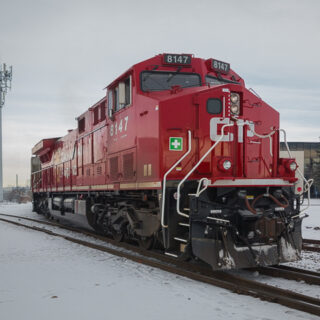
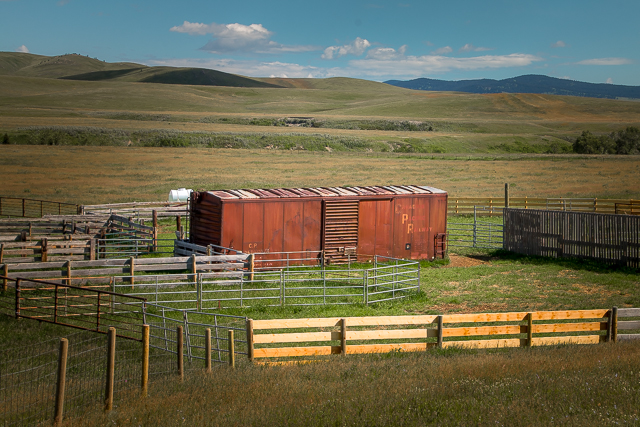
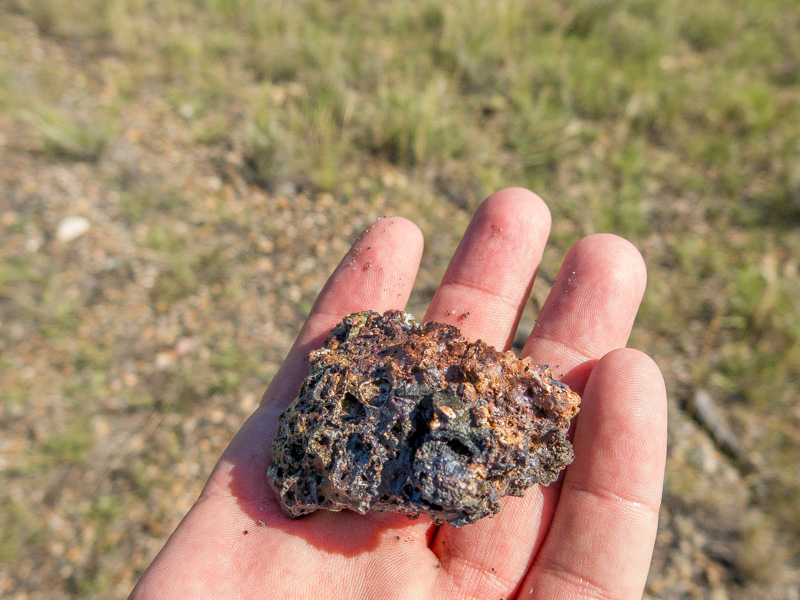
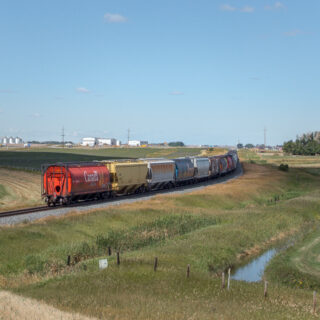
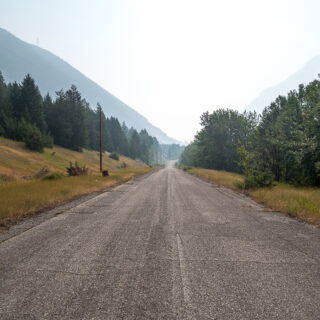
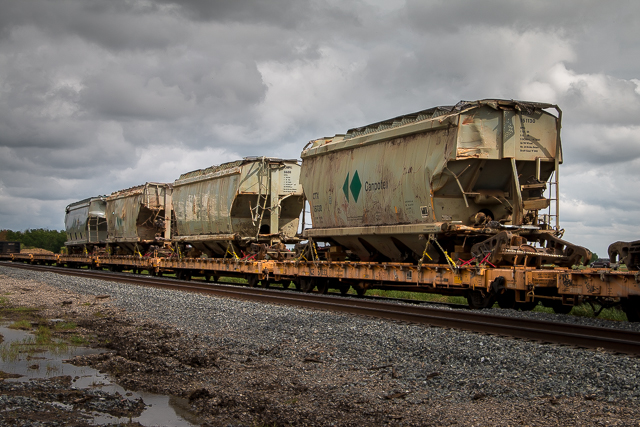
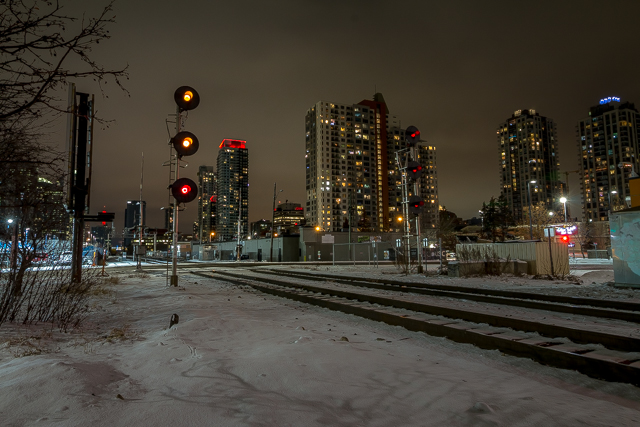







GE no longer makes locomotives, having sold that part of their business to Wabtec, the railroad side of Westinghouse Air Brake. Just like how EMD hasn’t been part of General Motors for years, and is now owned by Caterpillar.
Locomotive electrical systems have a bit more history to them than just 100% DC vs 100% AC. Early units were entirely DC, and could even be push-started if the right relays and contactors were closed and the unit set in motion. Early ALCO/MLW operator’s manuals actually contain step-by-step instructions for doing this.
It was found that the early pure DC control systems started to have reliability problems once locomotive horsepower got above about 2000, so all 3 manufacturers switched to AC main alternators for their more powerful units in the 1960s, starting with the ALCO C630/C430, EMD SD40/GP40, and GE U28B/U28C. In these units the main alternator’s output goes through a large diode bank to produce DC current for the traction motors.
The problem with brushed DC traction motors is that they overheat easily at low rpm/high power situations, such as lugging a heavy train upgrade, which can severely damage the motor’s internal parts. AC motors are much simpler internally, and do not produce as much heat in those situations. Historically, the other electrical equipment required for a AC-traction diesel-electric locomotive was both very expensive and quite bulky, but this changed over time.
EMD’s quartet of SD60MAC demonstrators were the first such units in North America, followed by the production SD70MAC and GE’s AC4400CW. These units have a AC-DC-AC traction electrical system, with a AC main alternator whose output is converted to DC, which is then converted back to AC for the traction motors. This design allows for very precise wheelslip control that is not possible with DC motors, and the traction control computer system can actually maintain a “wheel creep” situation, where the wheels are turning slightly faster than naturally rolling. It was found that this state is where maximum tractive effort is achieved.
For a long time EMD units had one inverter per truck, while GE’s had one per axle. This meant that while the EMD electrical gear cost a bit less, a single traction motor failure meant that a whole truck must be cut out, and the locomotive would lose 1/2 its pulling power, compared to 1/6 for a GE in the same situation. EMD now offers individual axle control as an option on the 710-engined units, and it is standard on the SD70ACe-T4.
Initially the AC-traction units cost significantly more to buy than their DC counterparts, but as they became more and more common the costs fell over time. By the 2010s the prices were almost the same, which is when the last two Class I DC holdouts (CN and NS) started ordering AC units. CN SD70M-2 8964 was the last new high-horsepower DC-traction road locomotive to be built in North America.
Both CAT/Progress/EMD and GE/Wabtec now offer packages to rebuild older DC-traction units like Dash-9’s and SD70’s into AC units.
It’s clear you’re very passionate about all things railway – thanks a bunch, this is very informative. Push started? So the axle motors made generators which then powered the starter, presumably? Who’d have guessed!
So hazy that day.
Glad it didn’t last long. Some years it was like that for months.
Good catch on the BNSF 9670 locomotive! It’s one of the rarer paint schemes.
A few good spots to railfan on the Crowsnest including the rock cliffs at Bellevue and the lookout by Coleman.
We don’t see much BNSF power up Calgary way, so it was nice to catch them. I don’t recall ever seeing one (in person) in that paint scheme, so that’s super cool. Yes, some great spots in the Pass area to train spot. We’ve been told of a couple new to us hike-in locations that are supposed to be spectacular.
There is a bit of BNSF that does come through, but they don’t often stay too long in the area (due to an agreement between BNSF & CP, otherwise CP has to pay $$). There are a few nice spots, we found a few additional areas when we were chasing the Holiday Train in December 2019
I’m making time to train spot in 2020. It’s been to long. I mean liking taking a whole day to do, not a few minutes here and there.
Let me know Chris and we can arrange some time trackside! 🙂
It’s a deal!
I’m always up for train photos!
I like how you framed the locomotives in the doorway. Nice!
The DC vs AC thing is for the electric traction motors that drive the wheels. In DC locomotives there’s a generator in line with the diesel engine that generates DC power to run the motors. AC locomotives have an alternator instead to generate AC power. I understand AC locomotives have better traction at low speed and are less maintenance intensive, but cost more to buy.
You like trains? Steve, we never knew. Haha! That door worked well…had but seconds to line up the shot. I didn’t go into detail about the electrical differences in the post for brevity, but it’s nice you explained it here.